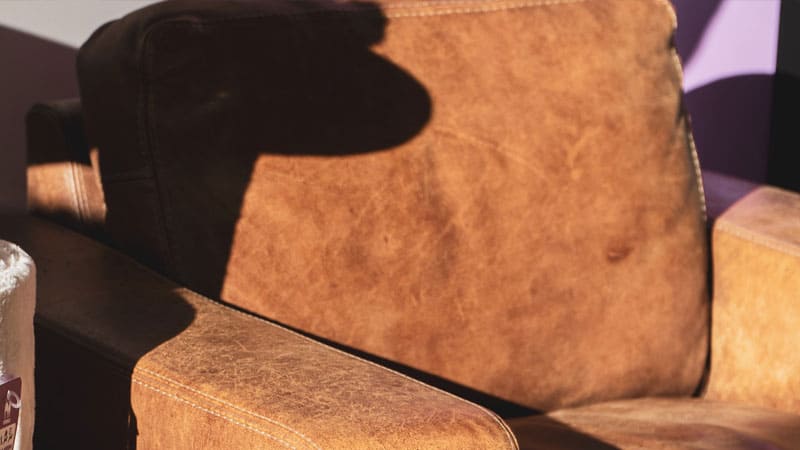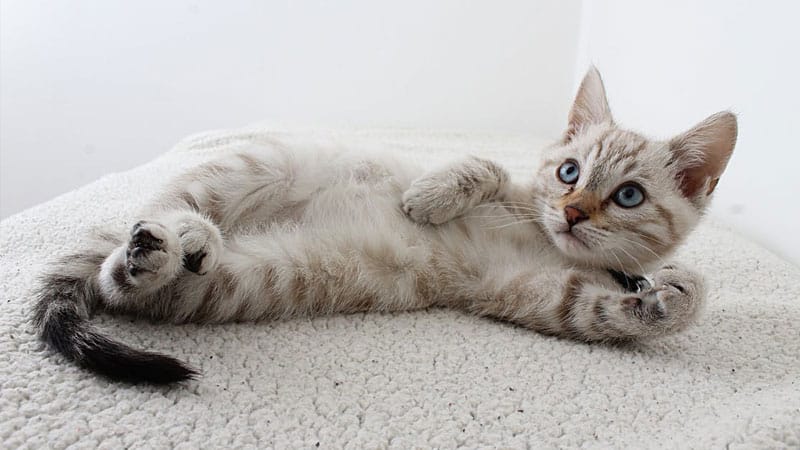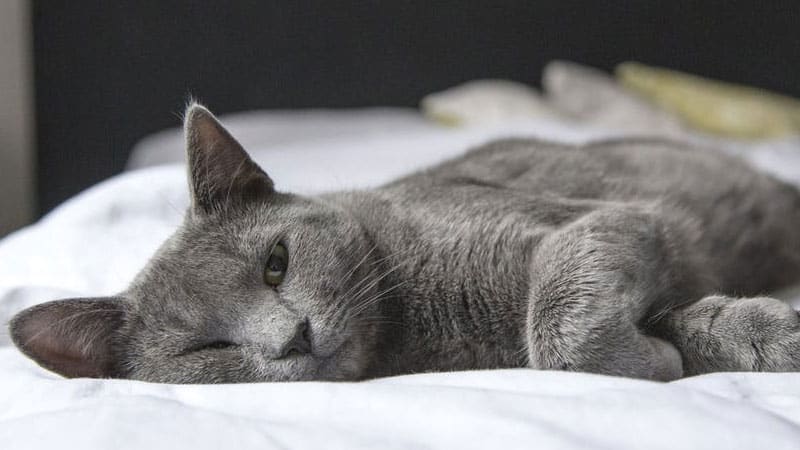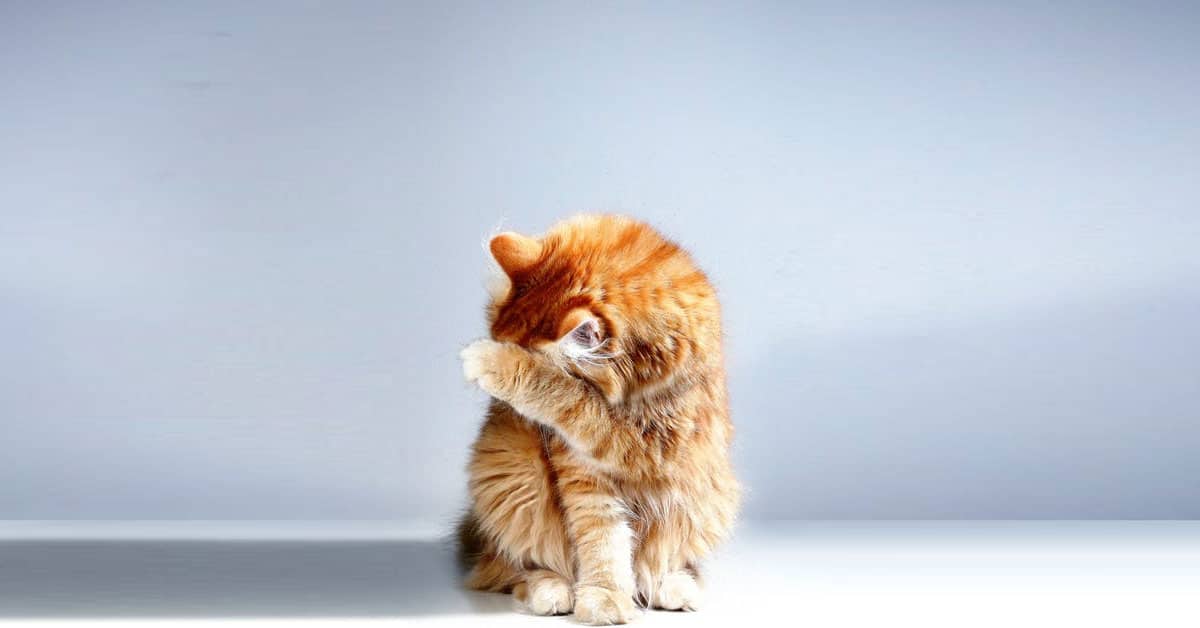Cats are adorable pets. However, their need to sharpen their claws and mark their territory can be disastrous to your furniture. Luckily, there are couch upholstery fabrics that cats absolutely hate. As a result, these fabrics will last longer and look better over time.
Cats hate microfiber, faux suede, real treated leather, velvet, and denim. On the other hand, cats love scratching sisal, tweed, faux leather, linen, and silk upholstery materials.
You might train your cat to not scratch furniture or get them a scratching post, but the best line of defense is to get a fabric they won’t want to scratch. This complete guide will take you through the list of couch upholstery fabrics best suited for a home with cats.
What Materials Do Cats Like To Scratch?

Cats will scratch at almost any type of furniture and upholstery. However, each individual cat still harbors some preferences. Generally speaking though, most cats love scratching loosely woven natural fibers. They also love looped upholstery that’s prone to pilling. Some general favorites include:
Sisal
Sisal is probably the ultimate favorite of most cats. When loosely woven, the sisal cleans cat claws better than most other materials and causes even less damage than trees would. In nature, cats use tree bark for scratching.
In addition to less damage and better cleaning, sisal comes with a natural smell yet also absorbs the cat’s scent quickly from the paws. This scent absorption makes it easy for cats to use sisal fibers to mark their territory.
Tweed
Tweeds are another favorite for most cats. Just like sisal, tweeds are woven materials and come loose in threads. They also absorb and give off scents well without damaging cat claws. With some scratching, tweeds leave around some string hanging, which cats love to play with.
Linen
Linen is gentle on the cat’s claws and absorbent of the scent cats give off through their paws. Linen doesn’t hold onto too much cat fur, making it good for not only scratching but grooming too.
Faux Leather
Low-quality faux leather is perfect for cat scratching. It strips off in strings which cats find entertaining. It’s also gentle on the claws, so cats often make deep long cuts much to the cats’ satisfaction and the owner’s chagrin.
Silk
Silk tears off in long strips which cats find highly satisfying. The silk fabric will also give off the cat’s scent, making silk ideal for territorial markings. Silk is tough enough to offer a thorough cleaning for the cats’ claws without causing damage.
Softwoods
In nature, cats clean and sharpen their claws by scratching on tree bark. In the modern home, the closest thing to a tree bark is the softwood material on most wooden furniture. Cats will scratch at wooden furniture legs, posts, horizontal armrests, and any exposed softwoods.
Hardwoods pose more of a challenge for most cats. The tougher woods can damage claws and there is not that satisfaction of claws sinking in and making long tears or scratch marks.
What Materials Do Cats Hate To Scratch?

If you want to cat-proof your couch there are fabrics that most cats will avoid scratching. Such fabrics include:
Leather
Unlike faux leather, real leather, especially when treated, can be tough to tear and damage cat claws. Treated real leather also doesn’t absorb and give off cat odors, so it’s not very ideal for marking territory. Additionally, the treated leather doesn’t pill so there are no threads and strings hanging to attract playful cats and kittens.
Real and professionally treated leather doesn’t retain cat furs and is easy to clean. To further dissuade your cats from scratching your leather couch, you can regularly spray the couch with strong citrus which acts as a cat repellant.
Microfiber
Microfiber is a synthetic fiber that’s 100 percent polyester and very tightly woven together. The material is almost impenetrable for cats’ claws and well-nigh impossible to tear. This denies cats the satisfaction they get from scratch.
Microfiber doesn’t absorb moisture or retain furs and odors. It is probably the top material that cats hate scratching the most. A vacuum cleaner or handheld lint roller will most likely remove all cat fur from your microfiber upholstery as the material doesn’t embed the fur. This makes it difficult for cats to mark their territory.
The good part for cats is that microfiber is soft and comfortable for felines to lie on. So they can spend hours on the couch without leaving scratch marks, unsightly stains, or cat odors.
Faux Suede
Just like microfiber, faux suede is dense, not prone to pilling. It is made through non-woven construction and doesn’t retain fur, moisture, or odors. Faux suede stands up well to cat claws and doesn’t easily tear.
While your cats will enjoy the comfort and snuggly feeling of lying on faux suede, they will likely not feel an inclination to dip their claws into the fabric.
Velvet
The velvet material is made from long strands woven through a loom. The result is a dense luxurious fiber that’s resistant to claw marks. It also doesn’t pill easily so cats will not be attracted to loose strings, threads, and balls. Velvet is easy to clean and doesn’t retain moisture. It’s also a comfortable material for both humans and felines.
Denim
Denim is tightly woven cotton blends that create a seamless fabric. It is primarily used in making jeans and jackets but can also be used as furniture upholstery. Thick and dense denim is uncomfortable for cats to dig their claws in.
Denim doesn’t retain cat fur or absorb odors. So it’s not ideal for marking territory. It’s easy to clean and can be quickly vacuumed or wiped down for a fast odorless fresh look.
Can Cats Ruin Couches?

Yes, cats can ruin your couches in several ways.
Cats need to regularly trim their claws and remove old or worn out outer claws. Scratching allows the cat to shed the outer claw and reveal the new sharper and stronger claws. Ideally, the cat can go outdoors and use tree bark to condition its claws.
However, with most domesticated cats being indoors most of the time, your furniture will be the next best and most convenient tool for claw sharpening. The cat will scratch at your couch upholstery and wooden frames to clean, sharpen, and condition their claws.
Cats have sweat glands in their paws. These glands secrete an odor that alerts other cats of a possible mate. The odors can also be a warning to other cats not to invade taken territory. Cats also use odors to mask human scents. These cat odors can give off a scent that humans may find unpalatable.
How Can I Protect My Furniture From Cat Scratches?
There are several ways you can protect your couch from cat scratches:
Scratching Posts
The best solution is to provide scratching posts made from material your cat already likes to scratch. Place them conveniently at the places your cat already likes to hang out.
Cover Fabrics
You can cover your couch with materials your cat will find unattractive to scratch. For example, when leaving the cat alone in the house, cover your couch with aluminum foil, double-sided adhesive tape, or an upside-down vinyl runner. Provide your cat with scratching posts near the couch so they have a quick alternative.
Sprays
Spray some cat repellant such as citrus-based sprays on the couch.
Squirt your cat with water if you catch them in the act. This method should be used sparingly otherwise the cat will learn to fear you and will scratch anyway in your absence.
What Couch Fabric Do Cats Hate To Sleep On?

Cats will sleep almost anywhere, but they hate sleeping on aluminum foil. They find the texture discomforting and the noises startling.
Conclusion
Cats have a natural way of cleaning, sharpening, and conditioning their claws. That’s by scratching. To protect your furniture, avoid materials that cats like to scratch. Use upholstery fibers such as real leather and microfiber which cats hate to scratch but find comfortable sleeping in.

